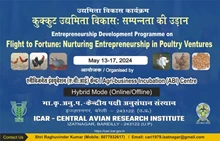
Vertical farming brings a lot of advantages to urban agriculture. One of the most important is that it takes up a lot less space than other plants. The crops being grown vertically brings about a great advantage as it has the capacity to fit in a lot more in a much smaller area. Here are some key aspects to consider when exploring the potential of vertical farming in urban agriculture in India:
Space optimization: Vertical farming allows the efficient use of vertical space by stacking plants in multiple layers, either in tall buildings or specially designed structures. In densely populated urban areas, where land availability is limited, vertical farming enables agricultural production in smaller footprints, making it ideal for urban settings.
Year-round production: Vertical farming utilizes controlled environment agriculture techniques such as hydroponics, aeroponics, or aquaponics. These methods provide optimal conditions for plant growth, including temperature, light, humidity, and nutrient levels. By creating a controlled environment, vertical farms can produce crops year-round, regardless of external factors like seasonal changes or adverse weather conditions.
Water conservation: India faces significant water scarcity issues in many regions, making water conservation a critical consideration for agriculture. Vertical farming systems use recirculating water systems, where water is efficiently recycled and reused. Compared to conventional agriculture, vertical farming can significantly reduce water usage by utilizing techniques like hydroponics, which require less water than traditional soil-based cultivation.
Increased productivity: Vertical farming allows for high-density planting and precise control over growing conditions, resulting in higher crop yields per square meter compared to traditional farming methods. With the use of artificial lighting, vertical farms can provide consistent and optimized light spectra, enhancing photosynthesis and plant growth. This increased productivity can help meet the growing demand for food in urban areas.
Reduced environmental impact: Vertical farming minimizes the need for large-scale land clearing and reduces the use of chemical pesticides and fertilizers, leading to a lower environmental impact. Additionally, vertical farming systems can be integrated with renewable energy sources such as solar panels, further reducing the carbon footprint associated with food production.
Local food production and reduced food miles: Urban vertical farms can be established closer to the point of consumption, reducing the distance food needs to travel from rural areas to cities. This local production not only reduces transportation costs but also ensures fresher produce with higher nutritional value, as crops can be harvested and delivered quickly after harvest.
Skill development and employment opportunities: Vertical farming requires specialized knowledge and expertise in areas such as hydroponics, lighting systems, automation, and data analytics. The promotion of vertical farming can contribute to skill development and create employment opportunities in the agricultural sector, particularly for the younger generation.
Potential challenges: While vertical farming offers numerous benefits, there are challenges to consider. Initial setup costs, including infrastructure, lighting systems, and automation technologies, can be significant. Adequate training and knowledge transfer to farmers and technicians are crucial for the successful implementation of vertical farming practices. Additionally, the availability and affordability of energy, especially in remote or underdeveloped regions, can pose a challenge to scaling vertical farming across the country.
To explore the potential of vertical farming in India, it is essential to undertake pilot projects, conduct research, and collaborate with agricultural experts, technology providers, and government agencies. Initiatives such as providing financial incentives, technical support, and creating favorable policies can further encourage the adoption of vertical farming practices in urban agriculture across India.











